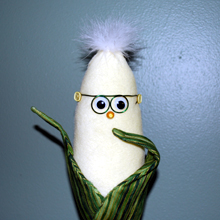

| Visitors Now: | |
| Total Visits: | |
| Total Stories: |

| Story Views | |
| Now: | |
| Last Hour: | |
| Last 24 Hours: | |
| Total: | |
Progress in the field with drought tolerant corn in the USA
WHAT THE GENERAL MEDIA IS REPORTING ABOUT DROUGHT TOLERANCE BIOTECH INNOVATIONS
Sep. 24, 2012
Source: Council for Biotechnology Information news release
This summer, our nation endured the most extreme drought since 1988, which resulted in damage to approximately 87 percent of corn and 85 percent of soybean crops throughout the country. Extensive media coverage of the effects of the drought highlighted substantial economic losses in the U.S. agriculture sector and increased global food prices, while pointing out the need for scientific solutions to manage drought.
Several widely-read and well-respected publications discussed plant breeding and biotechnology innovations that scientists and researchers are developing to improve a crop’s ability to use water more efficiently and tolerate drought conditions. Articles shared stories of seed companies working with farmers across America’s farm belt to conduct field trials of drought-tolerant corn varieties.
The following are citations from these publications to provide you with insights on what the media is saying about agricultural innovations:
In late July, Scientific American wrote that 250 farmers participating in early trials of drought-resistant corn varieties reported positive results: “Among those is Clay Scott, a corn grower in western Kansas who volunteered to grow the engineered corn as part of Monsanto’s field trials. ‘We’re starting to see some real winners in the plots,’ said Scott, whose land is located in a region in extreme to exceptional drought, according to the U.S. Drought Monitor. ‘I’m excited about it.’”
A similar story was published online in MIT’s Technology Review, recounting how Illinois farmer Mike Cyrulik planted drought-resistant corn on a small portion of his 5,000-acre farm. The article stated that “weeks before the harvest, much of his and his neighbors’ crop is dead or dying. But not the portion of his land where he planted the new seed. The healthy looking plants have ‘wound up being the talk of the town,’ says Cyrulik, who expects a significantly higher yield, by 30 to 50 bushels, from each of those 220 acres in Bloomington.”
TIME Magazine echoed the projections of increased yields, reporting that “hundreds of farmers in the western end of the Corn Belt-an area that runs to dry even in normal years-are field-testing DroughtGard, and Monsanto says early results indicate that the GM crop might improve yields by 4% to 8% over conventional crops in some arid conditions.”
According to The Wall Street Journal, farmers will be better equipped to manage drought in the years to come with the help of agricultural technologies.
“Midwestern corn farmers who have suffered through one of the worst droughts since Dust Bowl days can at least look forward to 2013 in the knowledge that, even if rainfall remains sparse, seeds for a new drought-resistant hybrid corn produced by Monsanto will be available.”
2012-09-25 22:23:39
Source: http://gmopundit.blogspot.com/2012/09/progress-in-field-with-drought-tolerant.html
Source:



